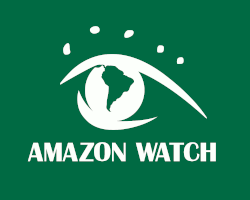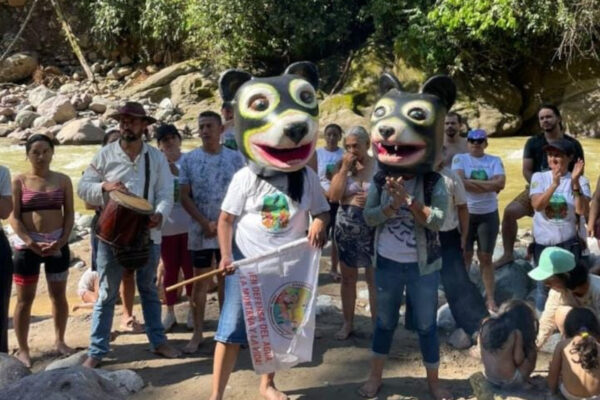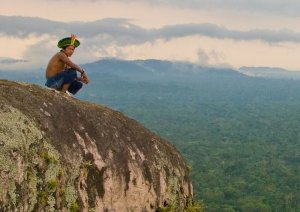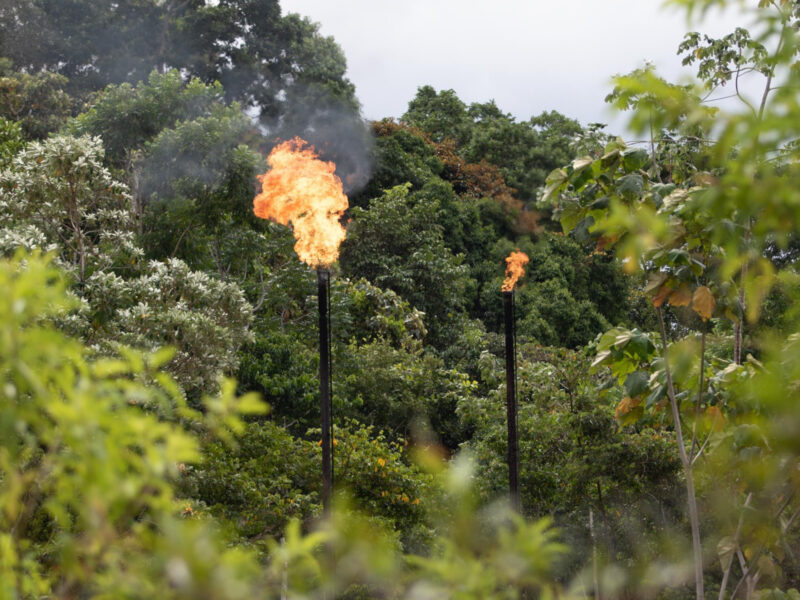“Petroperú controlled crude oil leak in the Pastaza river.” That was the headline of the press release published by the state-owned oil company on October 4 of this year, the day after it was known that a new spill had occurred. At the same time, Achuar and Quechua communities already affected started their own account of the damages. The spill would contribute to Petroperú’s injurious, 50-year-long history of unchecked contamination.
In its first news release after the leak, Petroperú claimed that it had “controlled the spill” and that its “Contingency Plan,” which is a set of company procedures to address an oil spill, had been immediately activated. To support its version of the story, the company also quoted an official release from the Peruvian Environmental Regulatory Agency (OEFA), which stated that the spill “was controlled” and that during the supervision, there was “no presence of crude oil in the Marañón river, from the mouth of the Huallaga river to the mouth of the Pastaza river.”
However, these official statements contradicted the first-hand accounts of Indigenous communities on the front lines of the spill. On October 7 – five days after Petroperú’s first press release – the Achuar Nationality of Perú (FENAP) officially reported that the spill had not been sufficiently controlled. In fact, they reported that the spill had spread down the Pastaza River, affecting ten more communities on top of the ten villages of the Quechua people, which were the first communities to be affected. In total, Kichwa and Achuar organizations have reported 20 villages were impacted, with some of them already running out of water and food due to the contamination of their rivers and crucial fishing areas.
Still, Petroperú reaffirmed its version of the story the following week. In a publication on October 23, Petroperú said that its measures “were effective in immediately controlling the incident.” Petroperú has also expressed its concerns around the news regarding this latest oil spill by sending letters to Indigenous organizations and to Amazon Watch. Specifically, they requested that we issue “corrections” to our recent blog to “guarantee the objectivity and credibility of the information for the benefit of readers.”
Petroperú did not publicly acknowledge that the spill had not been controlled and had spread, forcing the Achuar to travel thousands of kilometers to the oil company’s main offices in Lima. With support from Amazon Watch, they demanded immediate attention to the environmental disaster in their territories. When the Achuar finally managed to meet with Petroperú’s executives on October 20, the company acknowledged in a signed document that there were more than ten affected Achuar communities that it had not identified for clean-up work nor had it provided food or water for them.
A few days later, an official document obtained by the Quechua Indigenous Federation of Pastaza (FEDIQUEP) through a “request of access information” procedure acknowledged the oil spill’s impact on affected communities. In the document, the Peruvian Environmental Fiscalization and Assessment Agency (OEFA) states that while Petroperú only initially reported a total of “40 barrels spilled and an affected area of 3,000 m2,” they verified that “the crude oil traveled 75 km downstream and covered an area of approximately 18,750 m2,” corroborating testimonies made by Indigenous organizations just days before.
At the time of publication of this campaign update, the Achuar people report that the delivery of food and water is insufficient for the magnitude of the humanitarian needs in the area and that Petroperú has not yet officially recognized all the areas where crude oil has been detected. Due to this, FENAP decided to escalate its legal actions by filing a request for precautionary measures before the Inter-American Commission on Human Rights.
This latest oil spill is part of the longer history of oil spills and other violations of Indigenous rights related to the North Peruvian Oil Circuit, as a recent report documents. Indigenous communities of north Perú not only question when Petroperú will adequately attend to this oil spill, but also when they will truly access justice and remediation for past pollution and contamination by the company and other bad actors in the region. Importantly, measures to prevent future incidents remain unclear. So long as the extractive oil industry operates in the region, Indigenous communities and frontline residents will continue to face existential threats.
This most recent oil spill underscores the reality that its extractive business model has always and will continue to be antithetical to the health of the local ecosystem and frontline communities. Despite formidable challenges, Indigenous peoples actively organize to transform these material conditions, safeguard their homes and livelihoods, and protect the rainforest.
Now, Petroperú positions itself as a socially responsible oil company committed to the well-being of locals in the eyes of international investors and financiers in a desperate attempt to save its ailing oil business from complete insolvency. As Petroperú seeks more financial support, it is our responsibility to stand in solidarity with Indigenous movements, especially as banks that operate in our own backyard – such as Citi and JPMorgan Chase – profit off of the destruction of the Amazon and global climate chaos.
Join us in the movement to defend our collective future and hold these corporate actors accountable. In solidarity with the Indigenous nations of Perú, show your support and amplify the demands from the ground by signing this petition demanding an end to the financing of the Amazon’s destruction!













